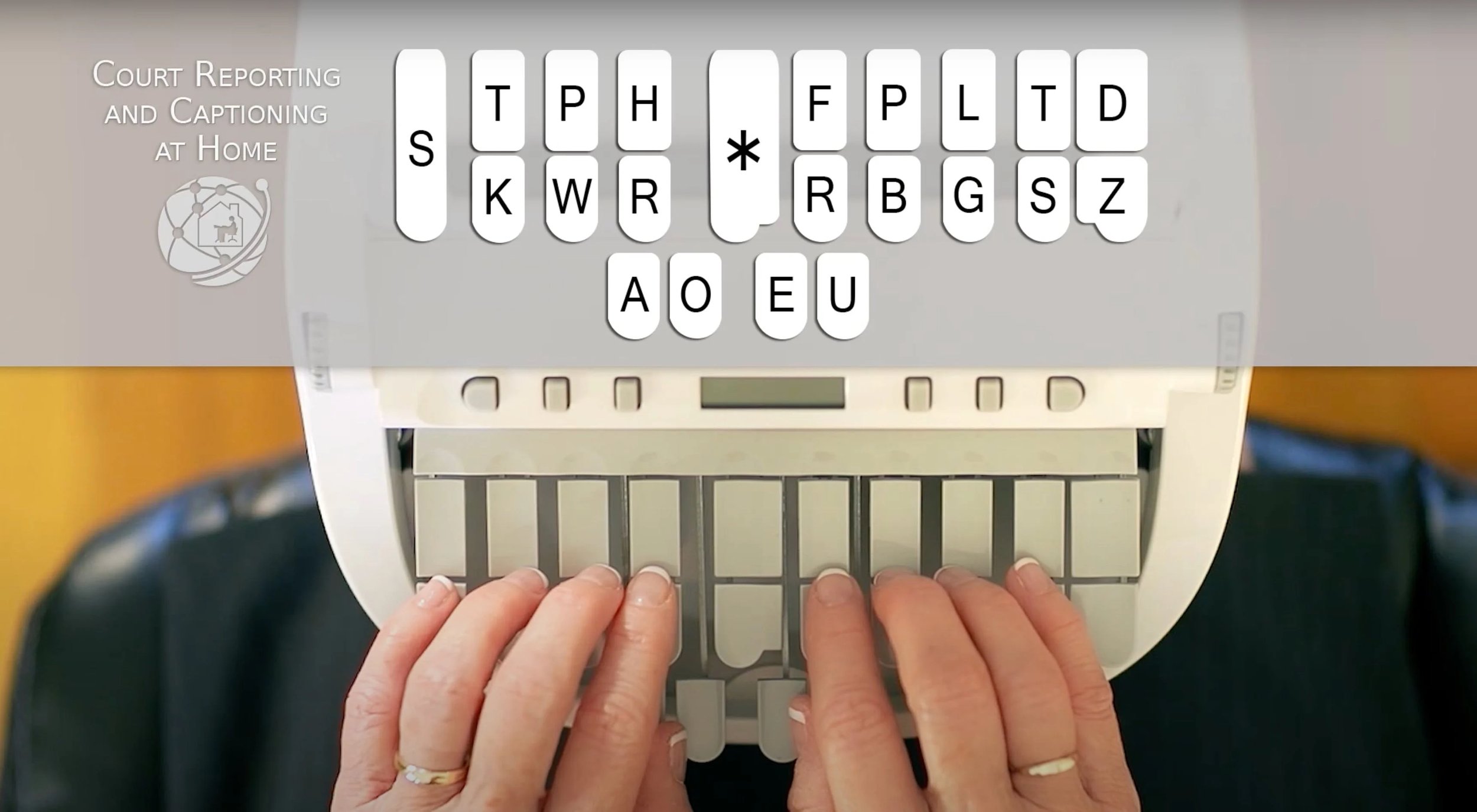Just How Court Reporting Functions: A Step-by-Step Guide to the Legal Process
Court reporting is an important part of the lawful system. It includes a structured procedure that guarantees precise paperwork of procedures. From prep work to the final delivery of transcripts, each action is important. Recognizing just how court reporters run deals insight right into the honesty of legal documents. The subtleties of their job can exceptionally impact legal outcomes, prompting questions concerning the technologies and techniques they employ. What are the details strategies that specify this career?
The Function of Court Reporters in the Legal System
Stenotype reporter play an important duty in the lawful system by providing precise and trustworthy transcripts of court proceedings. Their work warranties that every talked word throughout depositions, tests, and hearings is documented, which is important for preserving an official record of occasions. This transcription is basic for appeals, as it permits higher courts to review the process and figure out if any kind of mistakes were made throughout the test.
In addition, stenotype reporter aid in protecting the stability of the legal procedure by producing verbatim documents that can be referred to by legal representatives, judges, and other events involved in a case. They often use specific devices and software application to record discussion with precision. Beyond the courtroom, their transcripts can work as essential historical records, providing insight right into judicial process and the legal system's functioning. Inevitably, stenotype reporter contribute substantially to transparency and liability in lawful matters.
Getting ready for a Court Reporting Session
Preparation is vital for an effective court reporting session, as it assures the precision and effectiveness of the transcription process. Stenotype reporter begin by reviewing case materials, consisting of pleadings and witness checklists, to familiarize themselves with the terminology and context. They likewise make particular that they have the required tools, such as steno devices, note pads, and back-up tools, ready for use.
Before the session, communication with legal groups is crucial. Press reporters often make clear any details requests concerning formatting or chosen terminology. Furthermore, they may arrange to fulfill with witnesses or lawyers to talk about the process and validate the routine. Showing up early to set up the tools enables troubleshooting prospective technical concerns. On the whole, thorough preparation not just enhances the reporter's self-confidence yet additionally adds considerably to creating a clear and exact document of the legal proceedings.

Recording the Record: Methods and Equipment
Utilizing innovative methods and reputable tools, stenotype reporter meticulously catch the talked word throughout legal process. They use stenography, a method involving a specialized machine that allows them to type numerous sounds simultaneously, consequently recording dialogue in real time. This maker, recognized as a steno keyboard, is geared up with secrets that represent words and syllables, making it possible for swift and exact input.
Along with stenography, court reporters might use audio recording tools as additional devices. These gadgets act as backups, making certain that no essential information is shed during process. Some reporters integrate software that enhances their transcription effectiveness, using features such as voice acknowledgment and automated format.
Appropriate positioning and emphasis are critical; press reporters must preserve focus on all audio speakers, capturing nuances and inflections that contribute to the document. With a combination of ability and modern technology, court press reporters maintain the honesty of the lawful process by making certain a comprehensive and specific record of events.
Transcribing the Procedures
Transcribing the proceedings needs stenotype reporter to convert talked dialogue into written message with exceptional accuracy and rate. This process normally takes place immediately after the recording has actually been recorded, using specialized software program that enables for smooth transcription. Stenotype reporter need to pay attention attentively to the sound, guaranteeing that every inflection, word, and time out is properly represented in the transcript.
They commonly count on shorthand systems, personal transcription abilities, and progressed modern technology to facilitate this task. The environment in which they work can be fast-paced and in some cases chaotic, as legal procedures typically include multiple speakers and technical jargon. Stenotype reporter have to likewise preserve focus to catch nuances in tone and context that may be vital for the legal document. Eventually, the accuracy of the transcription is important, as it offers as a certification for future recommendation in legal proceedings.
Assessing and Editing the Transcript
The procedure of assessing and editing and enhancing the records is crucial for making certain accuracy in court reporting. Stenotype reporter typically collaborate with lawyers to make clear any type of uncertainties and validate the correctness of the taped declarations. This collaboration is crucial for preserving the stability of the legal document.
Importance of Precision
Accuracy offers as the cornerstone of effective court reporting, as even minor mistakes can greatly change the meaning of lawful process. The reviewing and editing procedure is essential in making certain that transcripts reflect the spoken word with integrity. Court press reporters thoroughly verify names, technological terms, and legal lingo to maintain accuracy. This focus to detail assists prevent advice misunderstandings that might affect instance outcomes. Accuracy cultivates trust amongst legal professionals, customers, and the court, enhancing the stability of the judicial system. Mistakes can result in disputes or charms, making it critical for reporters to fine-tune their job extensively. Eventually, the quest of precision not only improves the integrity of the transcript however likewise maintains the standards of the legal occupation.
Partnership With Attorneys
Partnership in between stenotype reporter and lawyers is critical during the assessing and editing phase of transcript manufacturing. This process ensures that the last file accurately reflects the spoken word and sticks to legal criteria. Lawyers usually examine transcripts for specific terminology, context, and any prospective errors that can affect the instance. Stenotype reporter count on lawyers' proficiency to clarify unclear areas or emphasize important declarations. Reliable communication is essential; lawyers might provide comments or demand improvements, which court press reporters must attend to promptly. This partnership not just boosts the quality of the records but additionally adds to a smoother lawful procedure. Inevitably, collaborative efforts lead to a trusted and precise record, necessary for lawful process and future referrals.
Providing the Last Transcript to Customers
Upon conclusion of the transcription procedure, court press reporters diligently prepare the last paper for shipment to their clients. This last records undertakes thorough checking to assure precision, as any type of errors can significantly impact lawful procedures. click for info Court reporters layout the record according to the certain demands stated by the clients or lawful companies, including pagination, indexing, and any required exhibitions.

Ultimately, court press reporters might give a cover letter summing up crucial information and supplying further support if needed. This thorough approach warranties that clients receive a polished, precise, and easily accessible records, vital for their legal needs.
Regularly Asked Concerns
What Certifications Are Needed to Come To Be a Court Press Reporter?
To end up being a court reporter, people commonly require a secondary school diploma, conclusion of a court reporting program, and qualification or licensure, depending upon state requirements. durham court reporting. Effectiveness in shorthand and innovation is also crucial for success
How much time Does It Require To Total Court Reporting Training?
Generally, finishing court reporting training takes between 18 months to 4 years, depending upon the program's intensity, the trainee's pace, and the details demands of the territory in which they wish to practice.

What Is the Average Income of a Stenotype Reporter?
The typical wage of a stenotype reporter differs by area and experience, usually varying from $45,000 to $100,000 yearly (durham court reporting). Variables such as specialization and need can substantially influence their incomes in various regions
Are Court Reporters Required to Have Accreditation?
Stenotype reporter are commonly required to obtain accreditation, which guarantees they have the needed abilities and expertise for exact transcription. Accreditation demands can vary by state or jurisdiction, mirroring expert criteria within the lawful area.
Can Court Reporters Job From Another Location or Freelance?
Stenotype reporter can function from another location or freelance, supplying versatility in their occupation. Lots of make use of technology to transcribe procedures from various areas, permitting diverse opportunities in the legal field while preserving a work-life balance.
Court reporters play a crucial duty in the lawful system by providing reputable and precise transcripts of court procedures. Furthermore, court reporters assist in preserving the integrity of the legal process by developing verbatim documents that can be referred to by legal representatives, courts, and various other celebrations involved in a situation. Using sophisticated see this page methods and dependable equipment, court reporters meticulously record the talked word during legal process. Court press reporters need to likewise maintain focus to record nuances in tone and context that may be essential for the lawful document. To end up being a court reporter, people normally need a high school diploma, conclusion of a court reporting program, and accreditation or licensure, depending on state requirements.